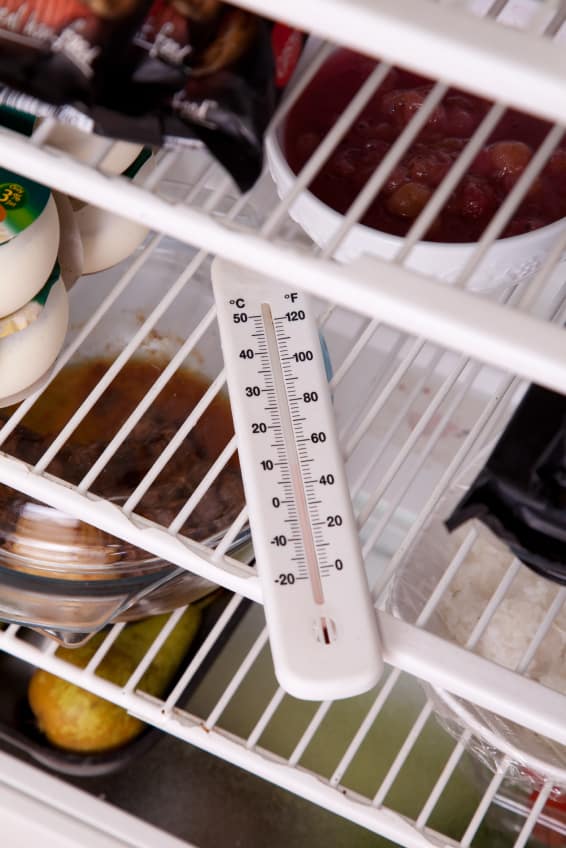When you’re working with fresh, whole ingredients, you’re not working with cans and boxes. By feeding your family better nutrients, it also means that you’re not working with nearly as many preservatives. Stemming the tide of preservatives into your body is a good thing, but it necessitates food safety diligence to avoid unsavory bacterias in your food.
Chefs and other food service workers are trained in food safety from day one, but for most home cooks, many of these lessons go untaught. But really, the only people in the world who handle food more than food service workers are regular people trying to feed their families. It’s easy to believe that as long as a food is in the fridge, it’s safe to eat, but that belief can lead to some common practices that can end with wasted food, or worse, a family visit to the ER for food poisoning.
Rule #1: Temperature Matters
The maximum internal temperature for food stored in the fridge is 41 degrees Fahrenheit. Any higher than that and you’re creeping into the range where bacteria gets out the mix tape and lights the candles, so to speak. To keep the internal temperature of the food at 41 degrees, the air temperature in the fridge needs to remain at 39. Also remember that the more times the door is opened, the harder it is to maintain the temperature. If your family is large or prone to frequently grazing out of the refrigerator, you might want to keep your refrigerator a few degrees cooler.
Most home-grade refrigerators don’t have thermometers, so all you have to guarantee the chill on your food is faith in the manufacturers. Simple thermometers like this one that hang from the wire racks or suction cup to the wall are inexpensive, easy to come by, and worth the investment.

You also need to be mindful of how your use of the fridge impacts the internal temperature. Refrigerators require airflow to maintain temperature; if you pack your shelves too tightly, your fridge will hike your electricity bill as it struggles to keep your food cold, and you’ll still be at risk for food poisoning. For the same reason, it’s a bad idea to line your shelves with foil or store a dish on a baking sheet when you don’t need to. Putting a steaming hot pan of food into the fridge is also a risky business: hot food will bring the temperature in the fridge up to the bacteria-loving zone before your fridge has the chance to cool it off.
Rule #2: Placement Matters
If your household is anything like mine, it’s far too easy to just shove all the groceries in the fridge as fast as you can when you get home from shopping. Time is rare enough as it is without taking the time to make sure your fridge is properly packed, but teaching your kids a few simple rules and handing the job off to them will help them learn a skill that will keep them that much safer when they have flown the nest.
1. The closer a food is to the door, the more it experiences fluctuating temperatures.
Don’t store perishable foods, like eggs and milk, on the door. Store raw meat as far back in the fridge as possible.
2. Store foods above one another in order of the internal temperature you’d need to cook them to for safe eating.
From top to bottom, your fridge should look like this: fully cooked foods (e.g., leftovers and cold cuts), raw fish, whole cuts of beef and pork, ground meat, whole poultry.
3. What about the vegetable crisper?
It’s at the bottom because the high humidity keeps the high-water plant cells from drying out and collapsing into mush, but vegetables don’t really need to be cooked at all, right? Right. Store your vegetables in containers with tightly sealed lids. Better yet, wash them thoroughly and prep them for the week before they go into the fridge and you’ll find most of your prep work done when dinnertime rolls around on a busy weeknight.
Safe refrigerator storage and organization practices are only the tip of the iceberg when it comes to food safety, but that tiny tip requires little effort and will keep your family safe and your budget insulated from unnecessary food waste. Moreover, I think you’ll find that making the effort to store your food carefully will improve your cooking, both in terms of flavor and ease. Well-stored ingredients stay fresh for longer, and everyone can agree that fresh tastes best.